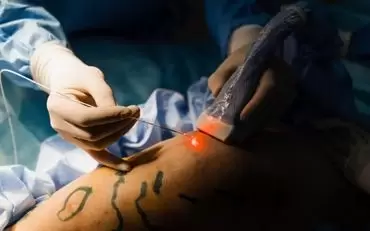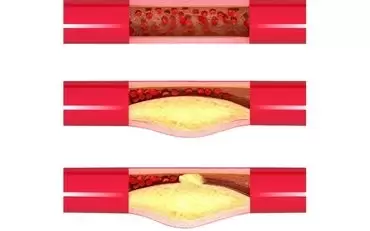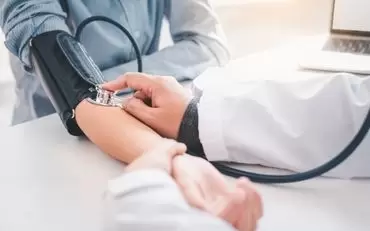16 Oca
Pulmonary Hypertension
OUR RECOMMENDATIONS FOR PATIENTS DIAGNOSISING PULMONARY HYPERTENSION ( PAH )...
If you have any of the following symptoms, go to the nearest emergency room and ask for your PAH doctor to be called from there
Chest pain
Rapid or irregular heartbeat
Fainting or feeling unwell
High or persistent fever
Coughing up blood
Coughing up dark phlegm
Bronchitis or fullness in the chest
Unusual (unusual) shortness of breath
Unusual fluid retention in the body (such as swelling in the legs)
WHAT TO DO IN CASE OF COLD OR FLU?(1)
Cold or flu can cause significant problems for patients with PAH. When you catch a cold or flu, your nose becomes blocked, making it difficult to breathe. You become tired more quickly. It is also recommended that patients with PAH consult their doctor before using over-the-counter cold medications. The best thing to do is to try to protect yourself from catching a cold or the flu as much as possible. The following methods may be helpful:
Wash your hands frequently, and use antibacterial gel when you can't wash your hands.
Have someone else take care of your child, relative, or friend when they are sick.
Get yourself and your family members vaccinated against the flu every year. Be sure to ask your PAH doctor about the medications you should use if you have a cold or the flu.
HOW SHOULD I PREPARE WHEN I GO TO THE EMERGENCY ROOM?
PAH is not a common condition. Emergency room healthcare professionals may not know the medications that PAH patients are taking. Therefore, PAH patients need to be prepared when they go to the emergency room. You can take the following precautions to cope with the difficulties you will encounter:
Get your doctor's emergency phone number and save it in your contact list and mobile phone.
Ask your doctor to call your PAH specialist as soon as you go to the emergency room.
Ask your treating doctor for a written statement about your condition and give it to the emergency room staff. This should include:
Names of medications you have been prescribed
Names and phone numbers of people to call in an emergency (for example, a family member, your doctor).
If possible, carry a PAH alert card. Ask your PAH doctor what should be on the card.
Talk to your nearest emergency room ahead of time and explain your condition.
WHEN SHOULD I SEE THE DOCTOR?
You don't need to go to the emergency room for every sign and symptom. However, if you are unsure, it is best to see your doctor rather than waiting for the problem to go away on its own. If you have any of the following, be sure to call your doctor or PAH specialist:(1)
Pregnancy
Diarrhea
Signs and symptoms that indicate worsening PAH
A decrease in oxygen saturation to a certain level (you should ask your doctor what this level is)
Situations in which you need to change or retake your medications
Needing dental or other surgical intervention
In conclusion,
Accepting your disease
Learning the important points about your disease
Organizing your life appropriately
Knowing when you need to see your doctor
Continuing your treatment by going to your check-ups regularly
Getting support from your family and loved ones will make it easier to cope with your disease and improve your quality of life.
TRAVEL(1)
Patients with PAH should make special plans before traveling by car, train, plane or ship. Be sure to discuss your travel plans with your doctor. Discuss the following with your doctor:(1)
Need to use oxygen
Amount of medication you should take with you
Your flight altitude (if traveling by plane) and the altitude of your destination above sea level
Travel insurance, etc.
BEFORE YOU GO(2)
- Ask your doctor if you are fit to travel. High altitudes may not be safe for you.
- Complete your routine medical tests before you travel.
- Take enough medication with you for the duration of your trip, taking into account delays.
- Take your medications in their original containers to make things easier for customs officials.
- Make sure you have any extra medical equipment or supplies with you, such as oxygen tanks.
- Ask your doctor for a letter stating your condition, the name and dosage of each medication, your oxygen needs, your doctor's name and phone number, and any other information important to airline personnel, customs officials, or doctors who may need to see you.
- Make sure that the people you are traveling with are knowledgeable about PAH and know what to do in an emergency.
- If possible, find out the name of a specialist at your destination.
- Plan your trip carefully. You may not have the energy to see everything you want to see, so figure out in advance where you want to see the most.
TRAVELING BY AIR
Ask your airline to provide wheelchairs for boarding and disembarkation.
To avoid any problems at the airport, always allow extra time for baggage claim, procedures and other checks.
Don't let small problems that may arise during your trip cause you distress. Be prepared for long lines, delays and other problems in advance.
Considering the possibility of your luggage getting lost, carry your medications in your hand luggage.
What you need to know about PULMONARY EMBOLISM (PE)
Air travel increases the risk of blood clots in the legs. This condition is called deep vein thrombosis (DVT). This clot can travel to the lungs and cause a condition called pulmonary embolism (PE). Since low air pressure increases the likelihood of blood clotting, the risk of PE is higher during air travel. Sitting in tight spaces and not being able to move your legs much during the flight also increase the risk. Here are some things you can do to eliminate this problem:
Wear compression stockings.
Move your legs a few times an hour.
Get up and walk around the plane every hour.
Ask for an aisle seat so you can get up and move around easily.
Drink water before and during your flight to prevent dehydration on the plane.
LIVING WITH PAH
Many things such as exercise, travel, and even daily activities may seem difficult when you have PAH.
Tips that can make it easier for you to live with PAH:
Take breaks, sit down, and rest when you are out of breath. Avoid being out of breath.
Do not smoke and do not go to places where people smoke.
Avoid dust, smoke, and strong odors.
To make daily life easier:
Lighten your household chores.
Replace heavy objects such as dishes and dishes with lighter ones.
Put items you use a lot in places where you can easily reach them.
Make arrangements that will make your work easier. For example, making a weekly meal list makes shopping easier.
Find ways to save time and energy:
Keep a supply of the items you need.
Take advantage of home delivery services
Related Articles

Treatment of Varices by Endovenous Laser
As a serious vascular disease, many diagnosis and treatment methods have recently been developed for..
Read More
Atherosclerosis (Arterial Stiffness)
Atherosclerosis is described as the narrowing and hardening of the arteries due to build-up of chole..
Read More
Hypertension
In most hypertensive patients, two or more drugs must be used to control blood pressure. Monotherapy..
Read More




